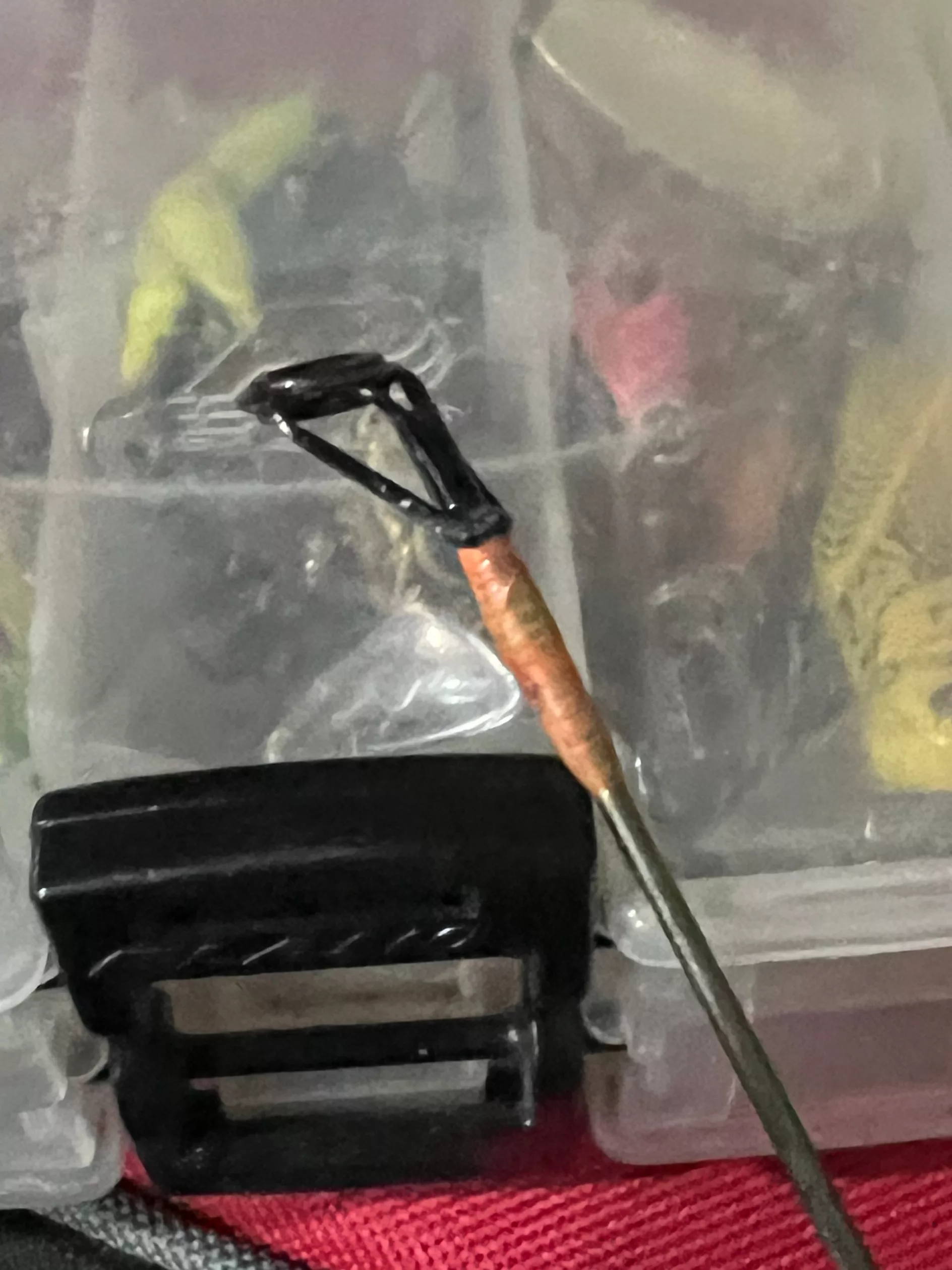
Tip Top Shape. The author’s repaired rod is just one of several examples how hunters and anglers save worthy gear and make it part of their time outdoors for an extended period. Simonson Photo.
By Nick Simonson
While flipping a small jig for some panfish this weekend, I looked over the slightly faded orange wrappings on the tip of a favorite light action rod as I worked the offering back and elicited the strike of a few willing bluegills. So many seasons had passed since I conducted the impromptu surgery on the end of that rod that I couldn’t recall when I had replaced the top eyelet with a few dozen turns of neon orange fly tying thread and an application of lacquer. It was likely seven or maybe eight, and in that time since its makeover, I’m sure the rod has landed hundreds of fish from trout to crappies, to even walleyes and a 36-inch muskie which stood out in memory.
At just $30 or so, the rod was by no means expensive, but its feel, flex and ease of casting was a combination I just wasn’t willing to give up on. So, with a five-dollar replacement tip and a bit of experience from the fly-tying vise – as I am not a rod maker by any means – I reinvested in the small spinning rod and salvaged it for what has been a long second life. Never one to be mechanically inclined, and always amazed that my minimal manual dexterity ever allowed me to make my own flies and jigs, I remain proud of the update to the ultralight combo and enjoy each fish I catch with it.
Such operations in the field and on the water come from time spent being out there and finding ways to fix the challenges that come up from time to time. Just like learning how deer move and what they can see and hear, or how the fish will react to a change in weather or a shift in structure, making the adjustments to remedy problems come part-and-parcel with being an outdoors person.
I’ve never been electrically inclined either, but I was able to diagnose a shorting trolling motor while my brother and I were taking a couple of buddies out for their first foray into muskie angling. I’d like to thank Mr. Friestad and my time participating in the creation of a Rube Goldberg device under his tutelage in Science Olympiad during high school for at least having the base understanding of circuitry that led me to find where the wires had inadvertently connected through the wraps of black electrical tape in our family craft. Transferring that bit of technological understanding over after a quick lunch break and some wiring work, we were back at it and both friends landed their first fish of 10,000 casts on the trip.
Be it some quick stitchwork with duct tape on a pair of field pants, the ability to un-jam a gun, or a couple quick twists of a pliers and screwdriver to right the wrongs of a wonky motor, the little problems that come up while hunting and fishing are often fixed quickly with a bit of experience in the outdoors, and a building up of trial-and-error in ways to make things work again; or at least until they have to be diagnosed and dealt with by a professional. Whether each such act is a band-aid to stave off a bigger problem for a moment, or a long term fix that grants a rod, or a motor, or a shotgun a second life, it provides a point to look back on and learn what works and what helps us all carry on with the gear we come to love – replacement parts and all – for the passions we pursue…in our outdoors.
